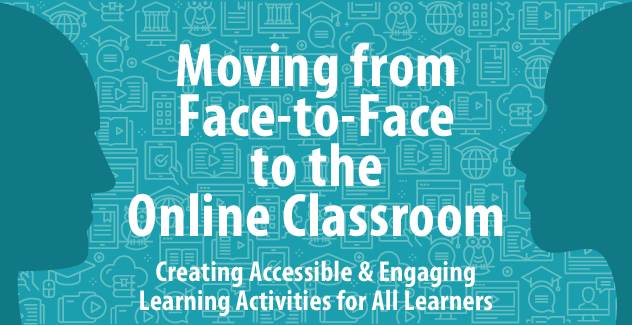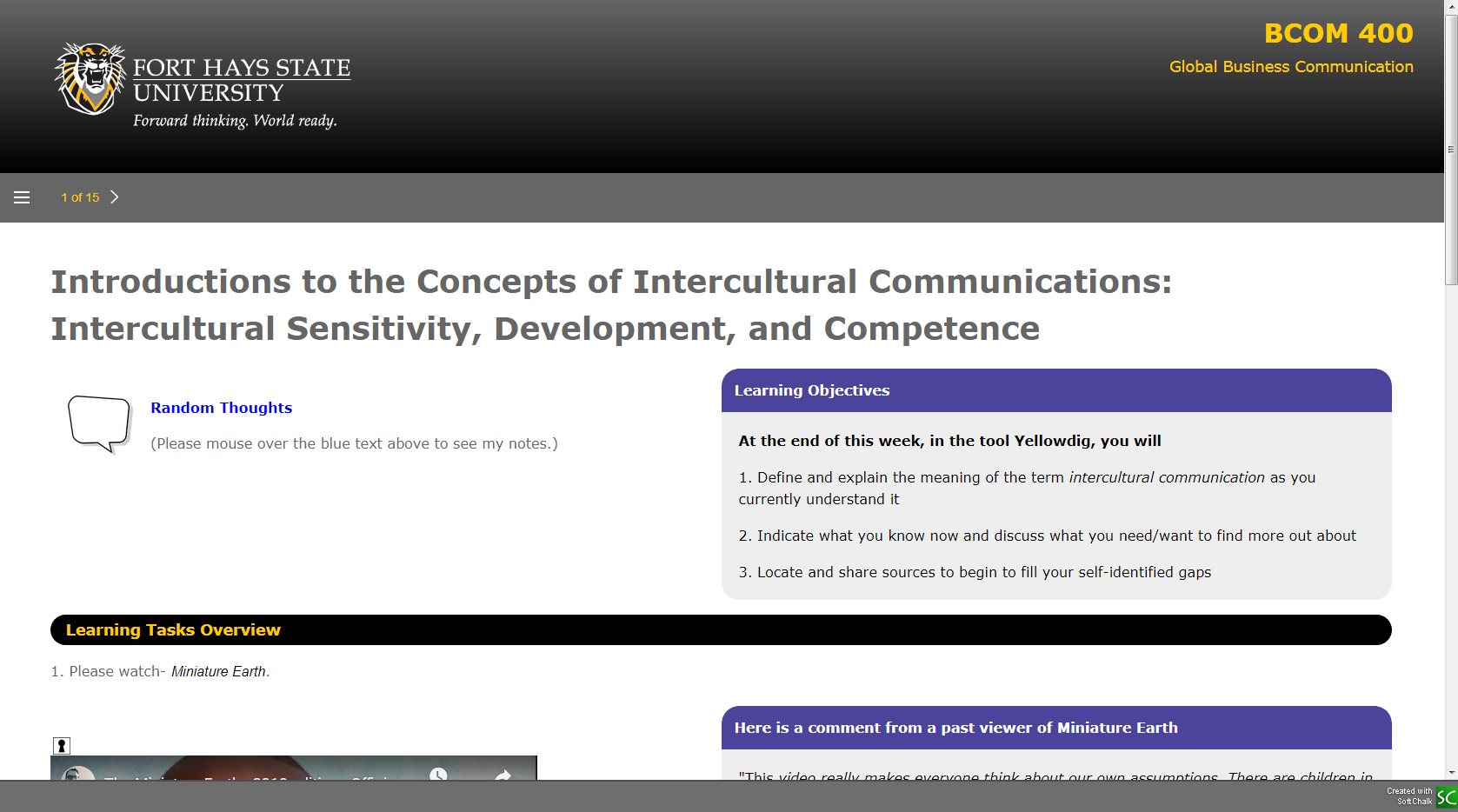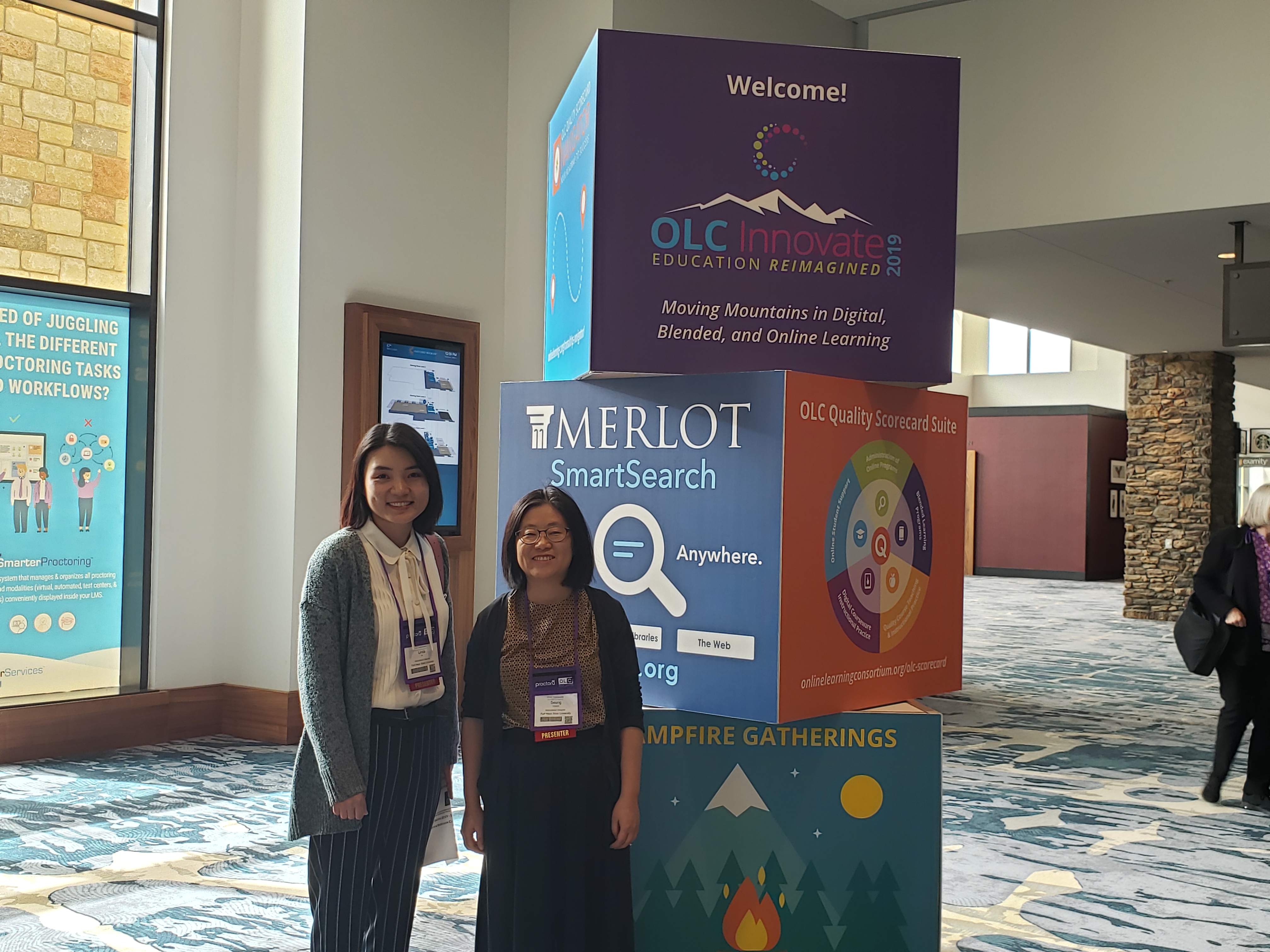
Moving from Face-to-Face to the Online Classroom—Creating Accessible and Engaging Learning Activities for All Learners
Introduction
In the process of developing online courses with instructors, we have constantly found that many instructors have a hard time translating the creative and interactive activities they have built for their face-to-face classes to an online learning context. Lacking a creative way to make the transition, some online instructors substitute these interactive learning activities with additional readings and formative assessments. Instructors’ reluctance to create interactive learning activities in online learning environments are due, in part, to the static layout of the learning management system (LMS), as well their unfamiliarity with best practices of engaging online learning environment.
This is not the only challenge. Postsecondary students vary in age, experience, and cultural background. Online student demographics have shifted away from the traditional 18-years-old college student toward older students who have full-time jobs or raise families. For many non-traditional students studying in front of a computer monitor imposes an additional barrier to their ability to access content. These changes lead us to rethink the way we design online courses. According to Rose, Harbour, Johnston, Daley, & Abarbanell (2006), the universal design for learning (UDL) framework aims to tackle the limitations of the standard learning environment. Implementing UDL principles can provide useful guidelines and help course designers avoid design choices that might create learning obstacles in their courses.
Most universities use an LMS to deliver courses and, due to the limited choices of activity templates many instructors focus more on providing a weekly schedule with readings and activities rather than creating complex and engaging experiences for substantive learning (Herrington, 2006). SoftChalk is an accessible content authoring tool that provides a number of options for creating interactive content. The SoftChalk lessons can be embedded to the LMS without directing students to an outside website, which can create a seamless learning experience for online learners. In this blog, we will introduce how we successfully use SoftChalk to help faculty answer the question “How can I possibly replicate this experience in an online course?”
Design Process
UDL is a design framework to build a better connection between learning outcomes and student performance. UDL guidelines encourage course designers to consider the fact that students have preferred ways to process information and showcase their knowledge growth. All UDL guidelines emphasize providing options for all learners—options for learners to access, process, and assess. The goal of a UDL guided learning environment is to educate students become expert learners – self-directed, self-regulated, motivated and engaged to learn.
One of the three primary principles of the UDL framework is to “provide multiple means of representation of instructional materials”. The three cases we selected here demonstrate how focusing on content format, organization, and scaffolding information, in conjunction with SoftChalk’s built-in activity templates, helped our instructional design team and course developers move from principles to practice. Online instructors either came to us with course content that they would like to convert from face-to-face to online learning environment, or we collaborated with them to curate learning content from scratch. Our instructional design team followed the “analyze, design, develop, implement, evaluate (ADDIE)” instructional design process to collaborate with our content experts.
Implementation
Case #1 Simulation “Rolling the Dice”:
An Agricultural Accounting instructor used the “throw of the dice” as a proxy for determining the outcome of various farm-related events that would need to be logged in each student’s accounting ledger. For example, one student might throw a ‘six’ and buy a used $12,000 tractor and another might throw a ‘three’ and buy a new $42,000 model. He was struggling to come up with an effective way of replicating this process in his online class and was on the verge of dropping the simulation idea altogether.
We initially researched the most obvious approach, which was simulated digital dice rolling software. However, we realized the goal of this activity was to teach students how to report different transactions into the accounting ledger rather than rolling dice. We identified the “feedback quiz” activity in SoftChalk as a better way to communicate the random nature and logic of the process to students. We segmented the scenarios by months, as well as adding related graphics to the scenarios. Our design of this SoftChalk activity were aligned with the Perception and Language & Symbol guidelines in the UDL framework.
Case #2 Creating Contexts for Online Students:

An instructor in the Department of Applied Business Studies deployed long weekly lectures accompanied by diverse learning activities in his face-to-face course. He initially tried to emulate that approach in his online course. Some online students complained about the linear delivery of large blocks of content followed by learning activities. When the instructor tried to solve the problem by organizing the resources in folders, some students ignored the content and went straight to the activities.
We decided to use SoftChalk to create cohesive, logically displayed content. One unique feature for this course was that the instructor shared his random thoughts in the learning modules each week. The random thoughts were personal reflections or related experiences with the assigned weekly topics. Since these random thoughts took a lot of space in the LMS platform, we used “tooltip” in SoftChalk to display this information. This case represents an example for the alignment of Language & Symbol and Comprehension guidelines in the UDL framework.
Case #3 Interactive Learning Experience:
An instructor in the Department of Nursing wanted to build an e-book. However, she needed a way to make it a robust interactive learning environment with intuitive, engaging, and customizable course content. She also knew that much of the content could be used in some lower-level nursing courses or other health-related courses. Therefore, she wanted to make the content easily editable by other instructors.
We built the content in SoftChalk because it provided more flexibility for organizing the content and allowed us to add interactive learning activities unavailable using the LMS. We applied guidelines from the UDL principles of engagement and representation to maximize student learning effectiveness. We focused on providing different modalities of resources, scaffolding information by adding background resource links, highlighting key points, and opportunities for quick pop-up self-assessments in SoftChalk to increase clarity of the information, as well as to promote student interactions with the content.
Conclusion
Ultimately, the instructors were pleased with the transformation of their course content and, more importantly, they were gratified by the quality of student interactions and engagement with the course. The initial collaboration with faculty members on the SoftChalk lessons took a considerable amount of time. Some of this was due to an initial hesitance on the part of the instructor top proceed down this path. Another reason was that we were trying to solve design problems in new, unique and effective ways. The investment was well worthwhile.
These existing case studies now help our instructional design team showcase the best practices of creating accessible, interactive, and engaging online activities in SoftChalk. As a result, more online instructors reach out to us and create interactive learning experiences for their students. The new courses have taken much less time to produce because, first, we have created the pathway, and, two, we can demonstrate the success of the earlier courses and get testimonials from those instructors.
References:
Herrington, J. (2006). Authentic e-learning in higher education: Design principles for authentic learning environments and tasks. Proceedings of E-Learn: World Conference on E-Learning in Corporate, Government, Healthcare, and Higher Education 2006, 3164-3173.
Rose, D. H., Harbour, W. S., Johnston, C. S., Daley, S. G., & Abarbanell, L. (2006). Universal design for learning in postsecondary education: Reflections on principles and their application. Journal of postsecondary education and disability, 19(2), 135-151.

Dr. Gulinna A has been an instructional designer in Teaching Innovation and Learning Technologies at Fort Hays State University since 2016. Dr. A helps faculty with blended and online course development, as well as consultation for effective teaching and learning strategies. She also offers workshops on emerging technologies and instructional design at the university. Her research interests include gamification in education, learning experience design, and influential factors that affect student perceptions of active learning. She can be reached at g_a@fhsu.edu.
Seung Gutsch has spent the past four years as an instructional designer at Fort Hays State University. She has worked collaboratively with the faculty from various disciplines. Her focus is to help the faculty create meaningful learning experiences for students through the use of effective teaching strategies and valid instructional design principles. She has obtained an MS degree in Instructional Design from Emporia State University. She can be reached at shgutsch@fhsu.edu.

Leave a Reply